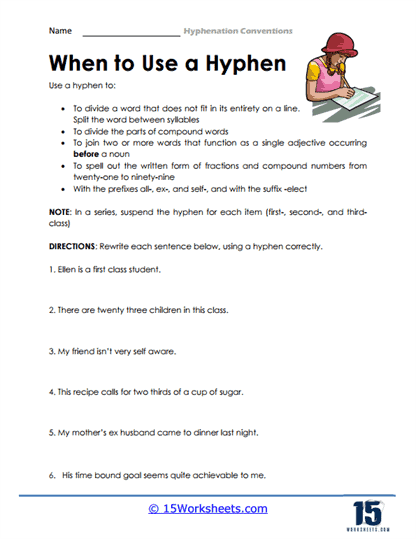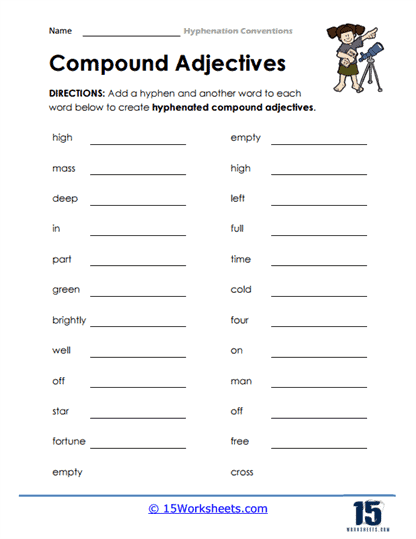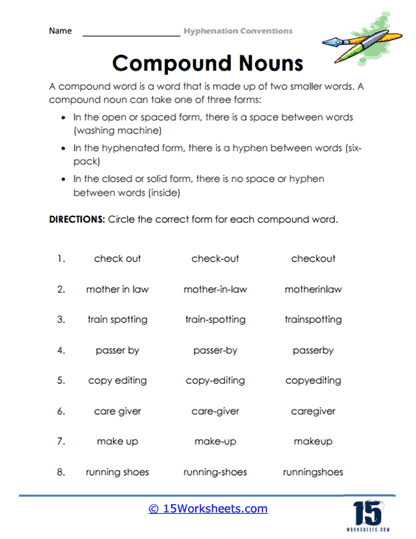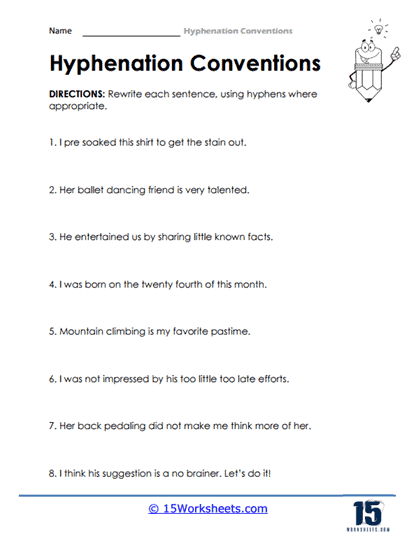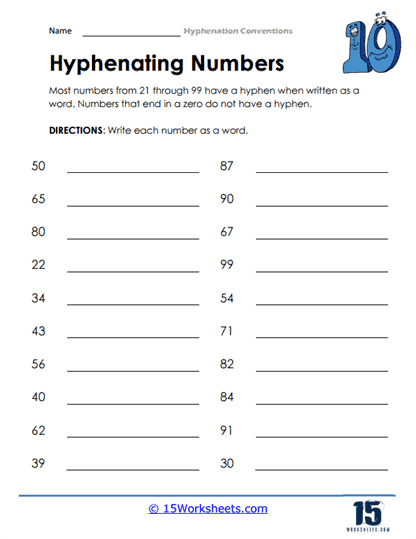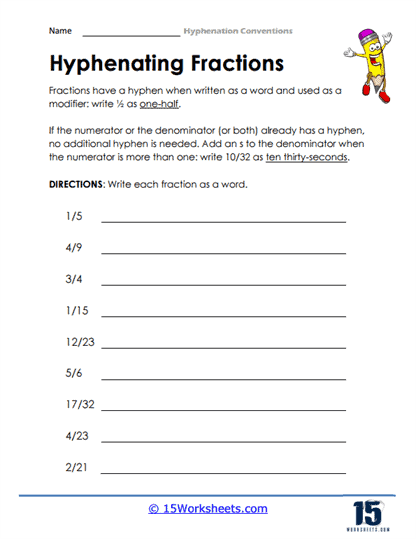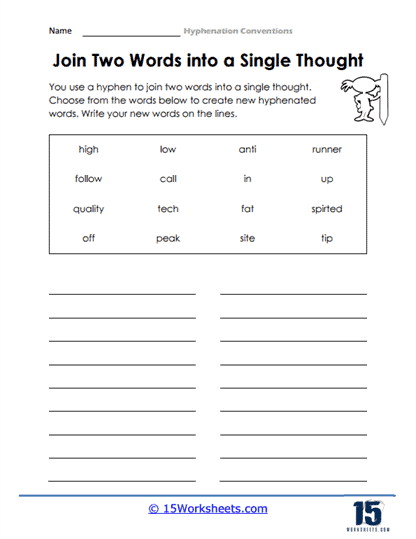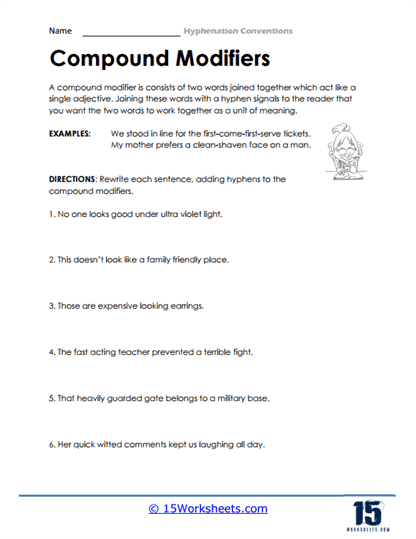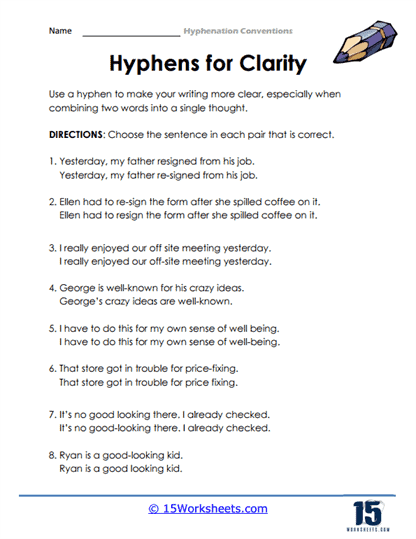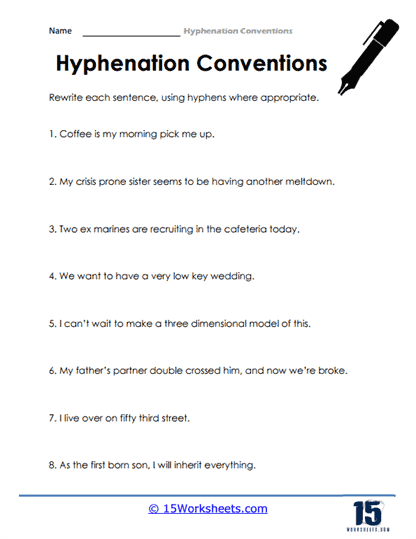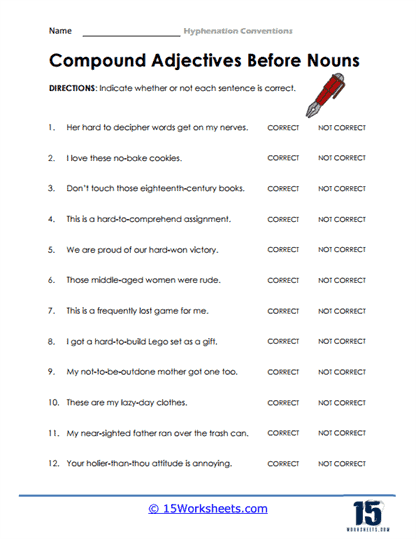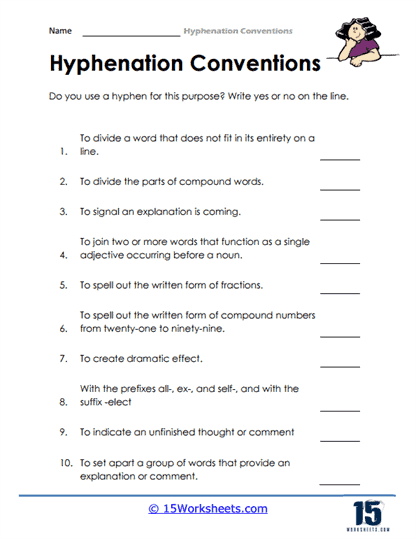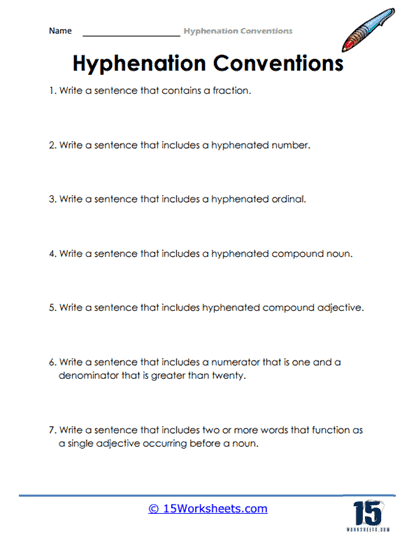Hyphens Worksheets
All About These 15 Worksheets
Conventions for writing are the rules that must be followed while doing any writing task. The basics of writing contain correct grammar, capitalization, spelling, and punctuation. Without these rules, you will not understand the text you write. Similarly, the correct use of a hyphen is also essential. If you make mistakes by misplacing a hyphen, read below to understand the conventions in hyphenation.
What Is A Hyphen?
The use of the hyphen (-) comes under the correct punctuation. It is used to join two or more words to form a single word, also known as a compound word. No other kinds of dashes can replace this mark. A hyphen is a punctuation mark (-) used to serve several purposes in written English. Some of its main functions include:
Forming compound words: Hyphens join two or more words together to create compound words, which function as a single unit in terms of meaning and grammar (e.g., mother-in-law, well-being, long-term).
Connecting compound adjectives: Hyphens link compound adjectives (i.e., two or more adjectives working together to modify a noun) that come before the noun they modify, improving readability and avoiding ambiguity (e.g., well-known author, high-speed train).
Indicating word breaks: Hyphens indicate word breaks when a word must be split between two lines of text. This often occurs at the end of a line in justified text or when space is limited (e.g., in newspapers or narrow columns).
Avoiding ambiguity: Hyphens can help clarify meaning when two or more words might be misinterpreted. For example, “re-sign” (sign again) versus “resign” (to quit a job), or “re-cover” (cover again) versus “recover” (to regain or get back something).
Joining prefixes or suffixes: Hyphens are sometimes used to connect prefixes or suffixes to a word, especially when the base word is a proper noun, the prefix ends with the same vowel as the base word starts with, or when the result would be difficult to read or pronounce without the hyphen (e.g., pre-Civil War, anti-inflammatory, co-owner).
It’s essential to use hyphens appropriately, as their presence or absence can significantly impact the meaning of a sentence. However, note that usage can vary between style guides, so it’s helpful to consult a specific guide when in doubt.
Conventions in Hyphenation
1. The joining of two nouns and to form a new word.
The truck driver deliberately tried to change lanes in heavy traffic as if he were accident-prone.
If written without a hyphen, the words truck and driver separate will be incorrect. Furthermore, the compound adjective accident-prone works as a modifier here.
2. Make a compound modifier to stand in as an adjective with a noun.
The cream-filled cupcakes were delicious.
If the two words are of different functioning, then do not join them, such as:
She wore a beautiful green dress.
3. Two words combined to describe a noun.
You can calculate the volume and surface area of a three-dimensional object.
4. Use a hyphen when writing a noun, adjective, or adverb with a present participle.
There are some delicious-looking cakes in the kitchen.
Slow-releasing drugs can be helpful in targeted drug delivery.
If the modifier comes after the noun, never use a hyphen for it.
The drugs are slow releasing.
Also, never use a hyphen if an adverb and a participle are written together.
The hall was lit with stars like a heavily lit sky on a full moon.
5. A hyphen between a noun and a past participle.
Solar-powered generators can be a sustainable form of electricity source.
6. A hyphen between a prefix and a noun.
Ex- I don’t want to complicate the matter of custody between my ex-wife and me.
All- Don’t act all-powerful when you cannot even persuade your kid to stop the game.
Self- I am pretty self-motivated after being depressed about the test for days.
Do not use a hyphen if the word “self” is used as a noun in the sentence.
7. Use a hyphen with a suffix as well.
The shell-like structure of the jewelry box was beautiful.
8. Use hyphens when writing fractions in words.
One-third of the solution got spilled in the machine.
9. Use a hyphen to write numbers in words.
Elizabeth’s daughter Mary was born in nineteen ninety-nine.
Twenty-three people died in the bus accident yesterday.
10. A hyphen is placed if the number is written before a compound adjective.
A 10-minute speech in front of the Board of Administration increased the chances of my admission.
11. A hyphen is used between a fraction and compound adjective
The half-fried chicken was left last night in the fridge.
12. Place a hyphen if multiple adjectives are listed before a noun.
The orange-green beads in her hair tie match the dress she wore.

